[javascript protected email address]
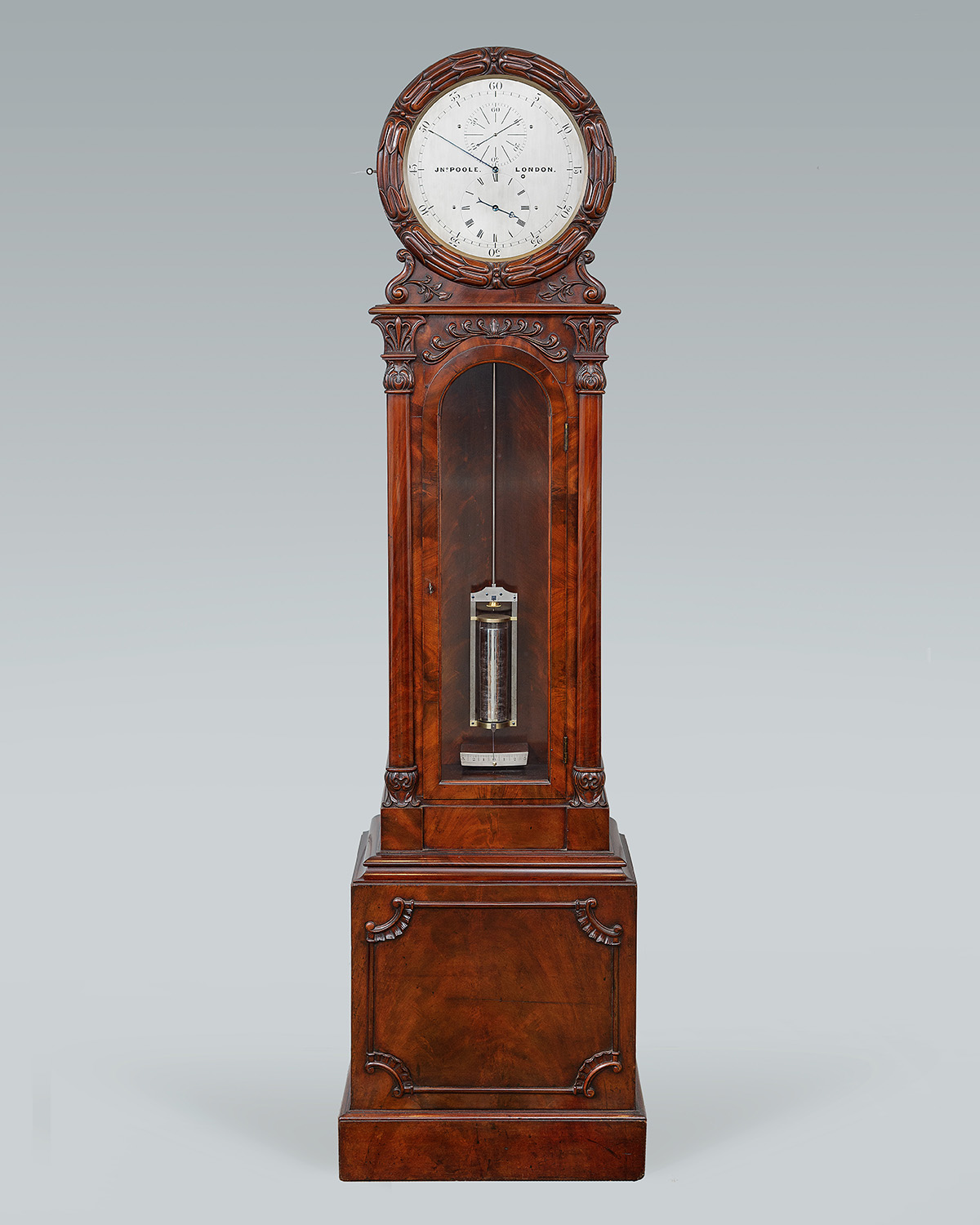
John Poole London

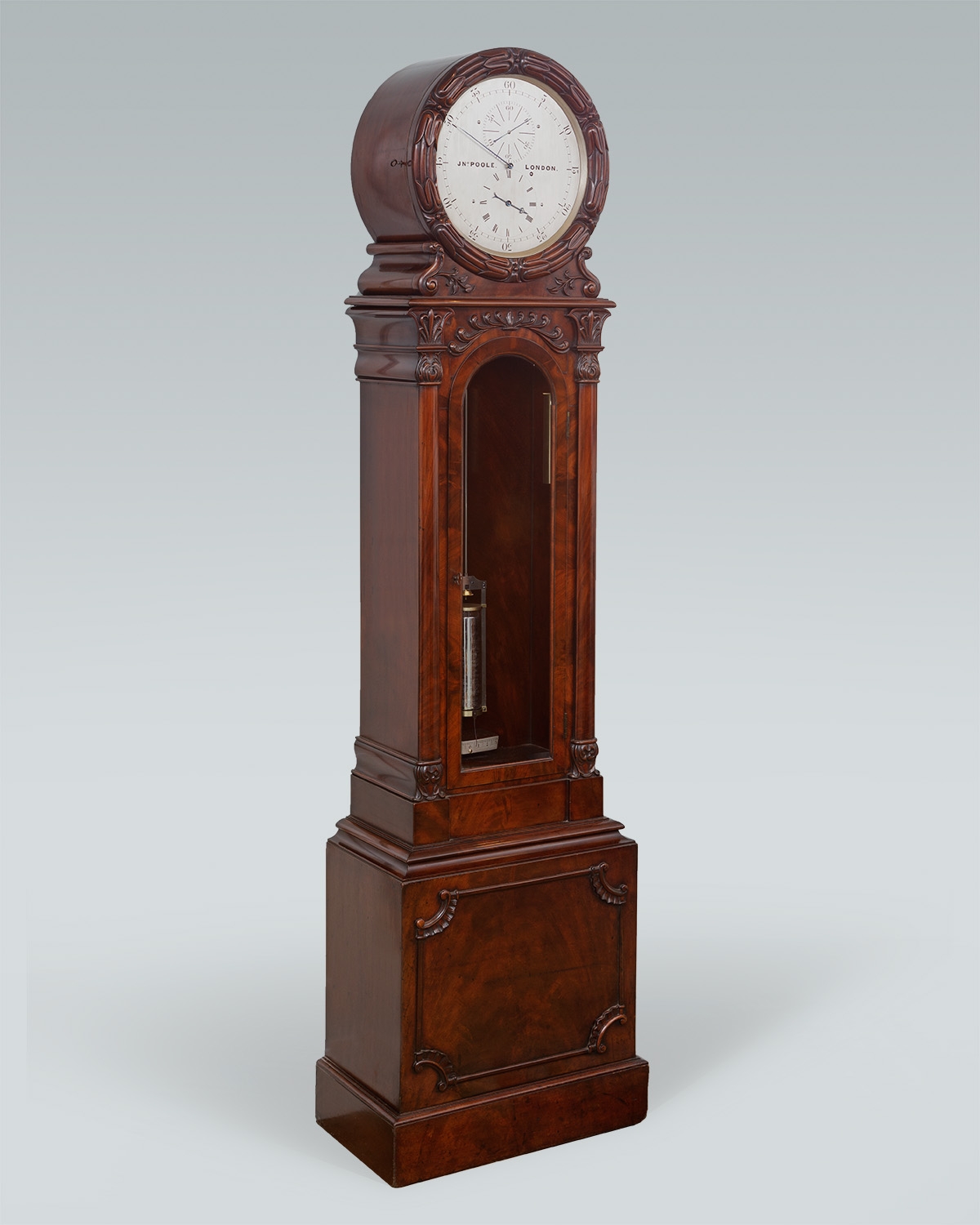
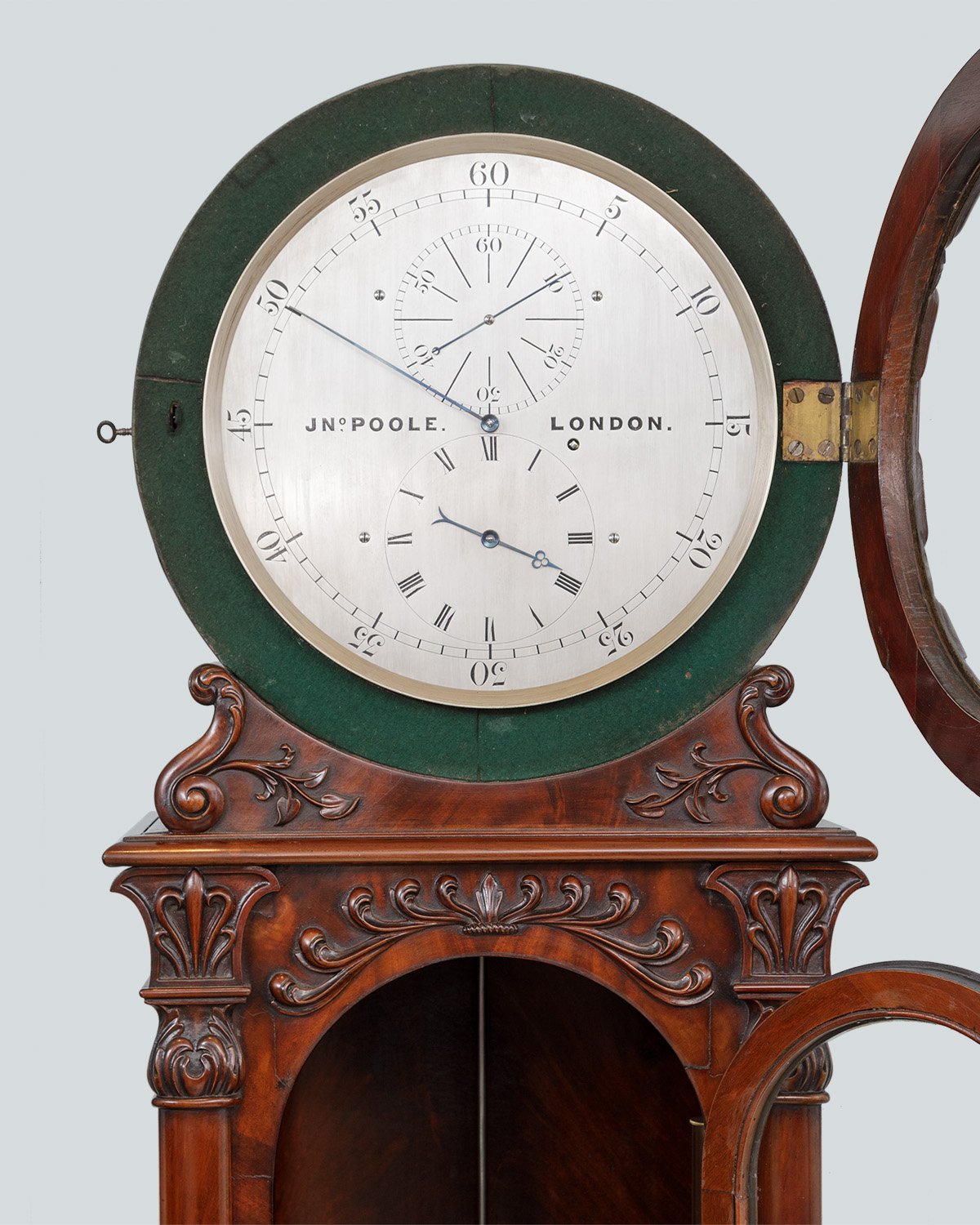
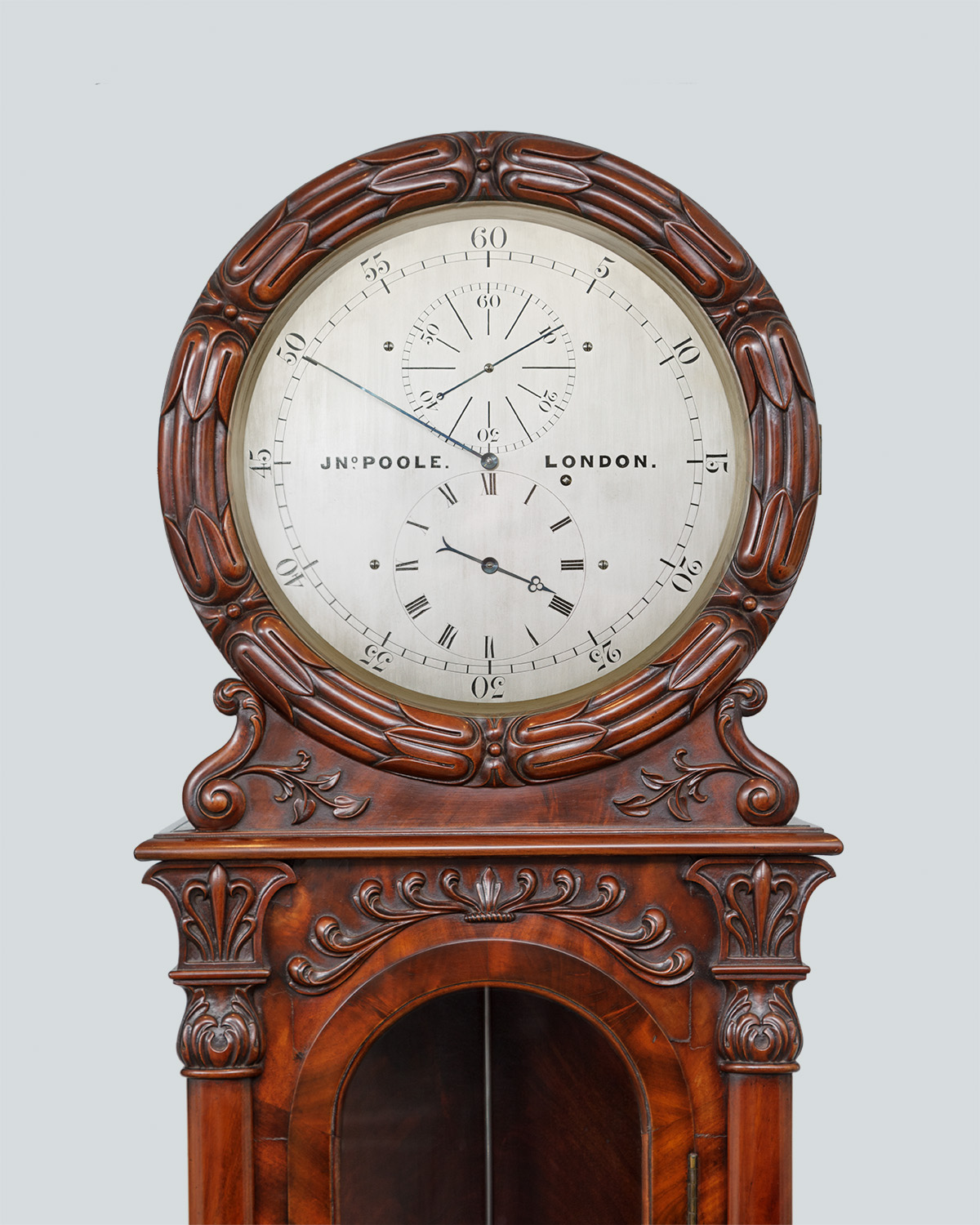
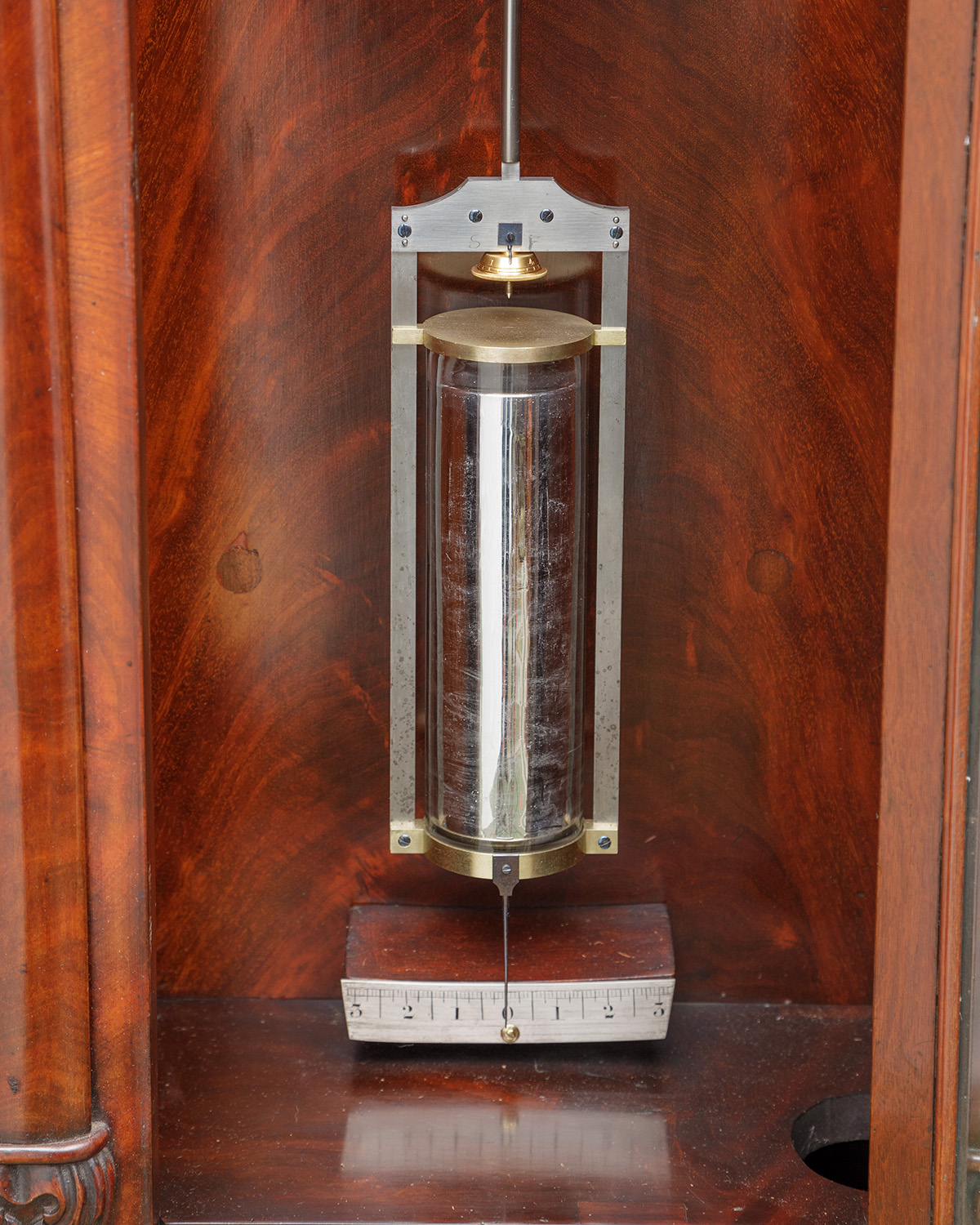
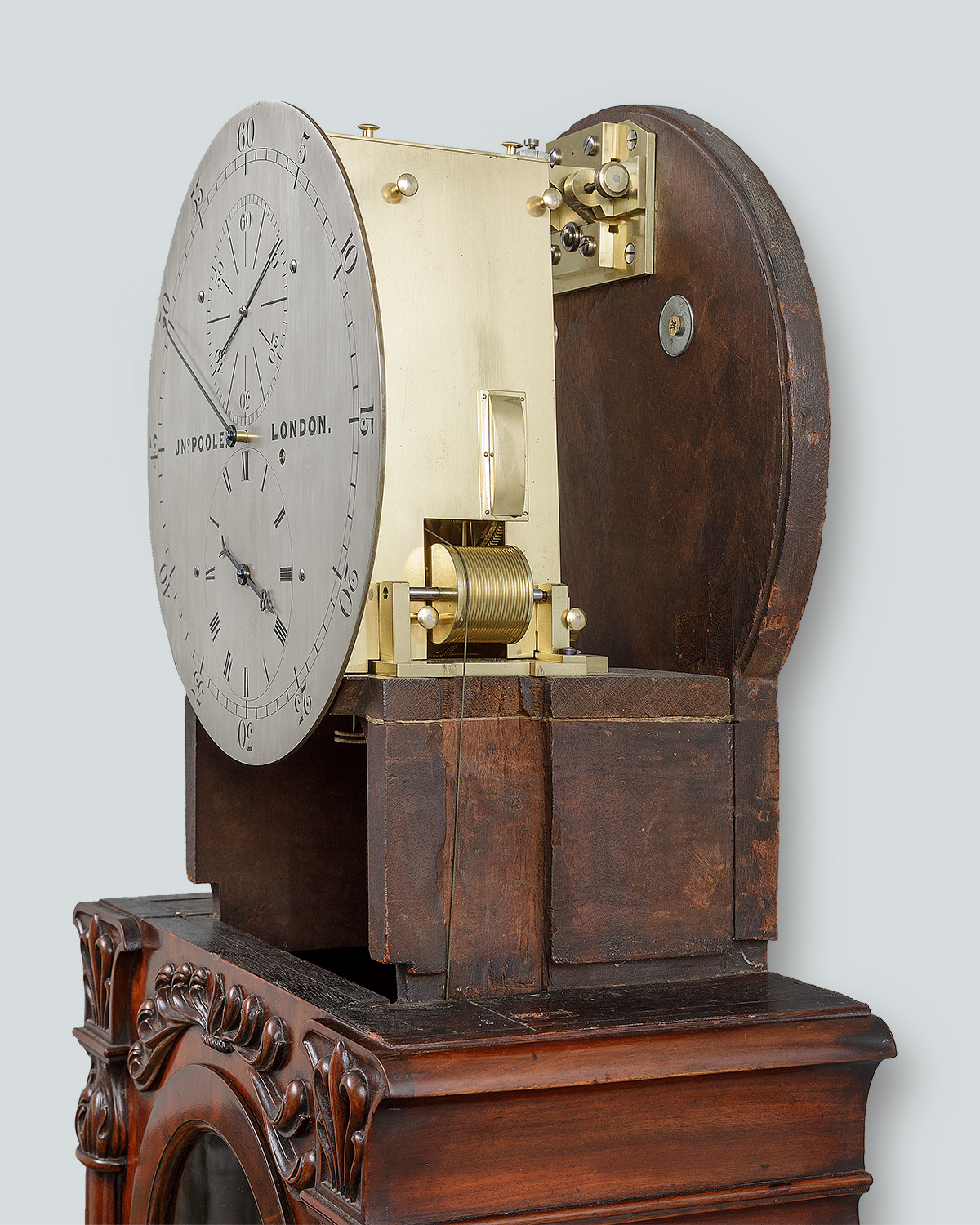
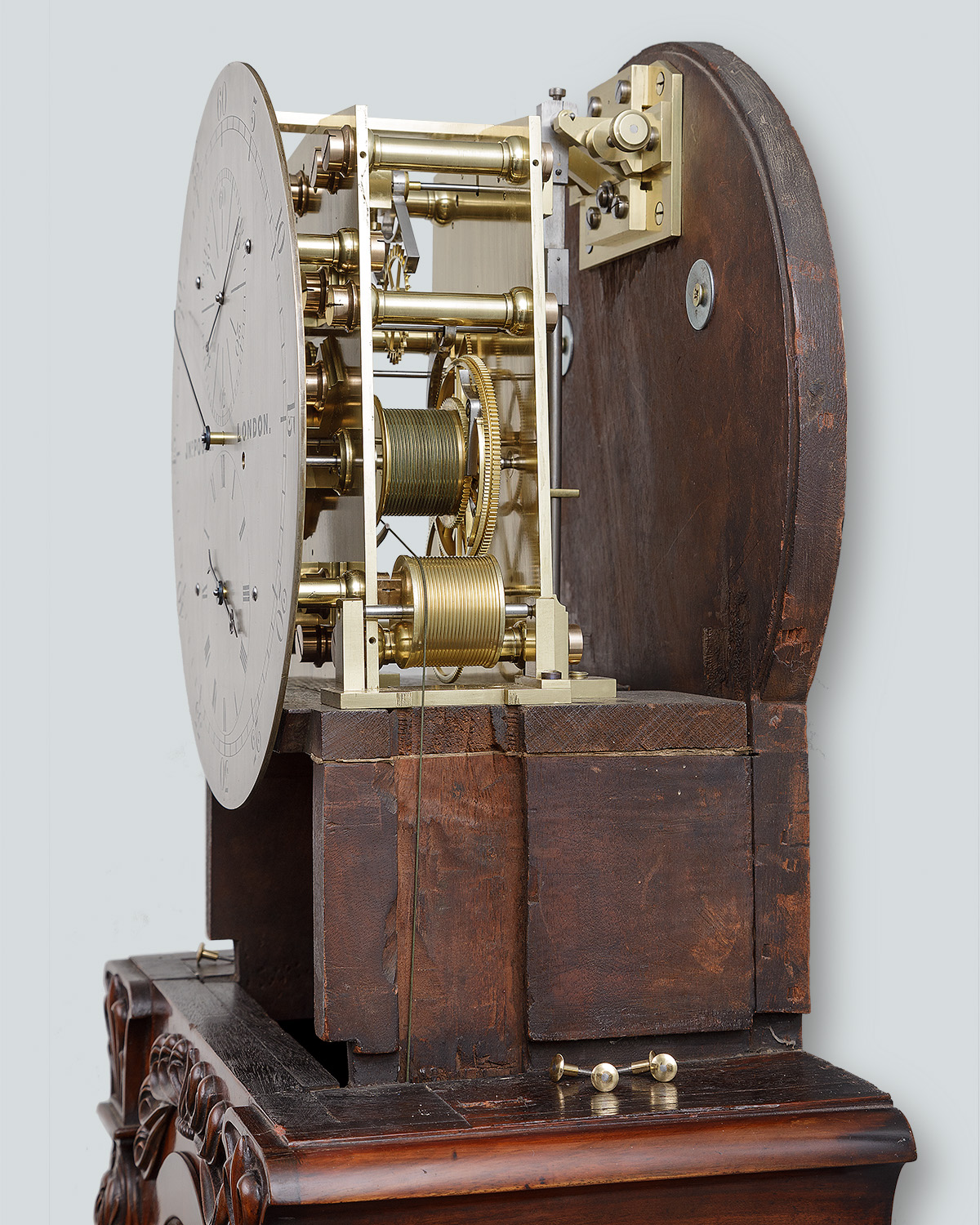
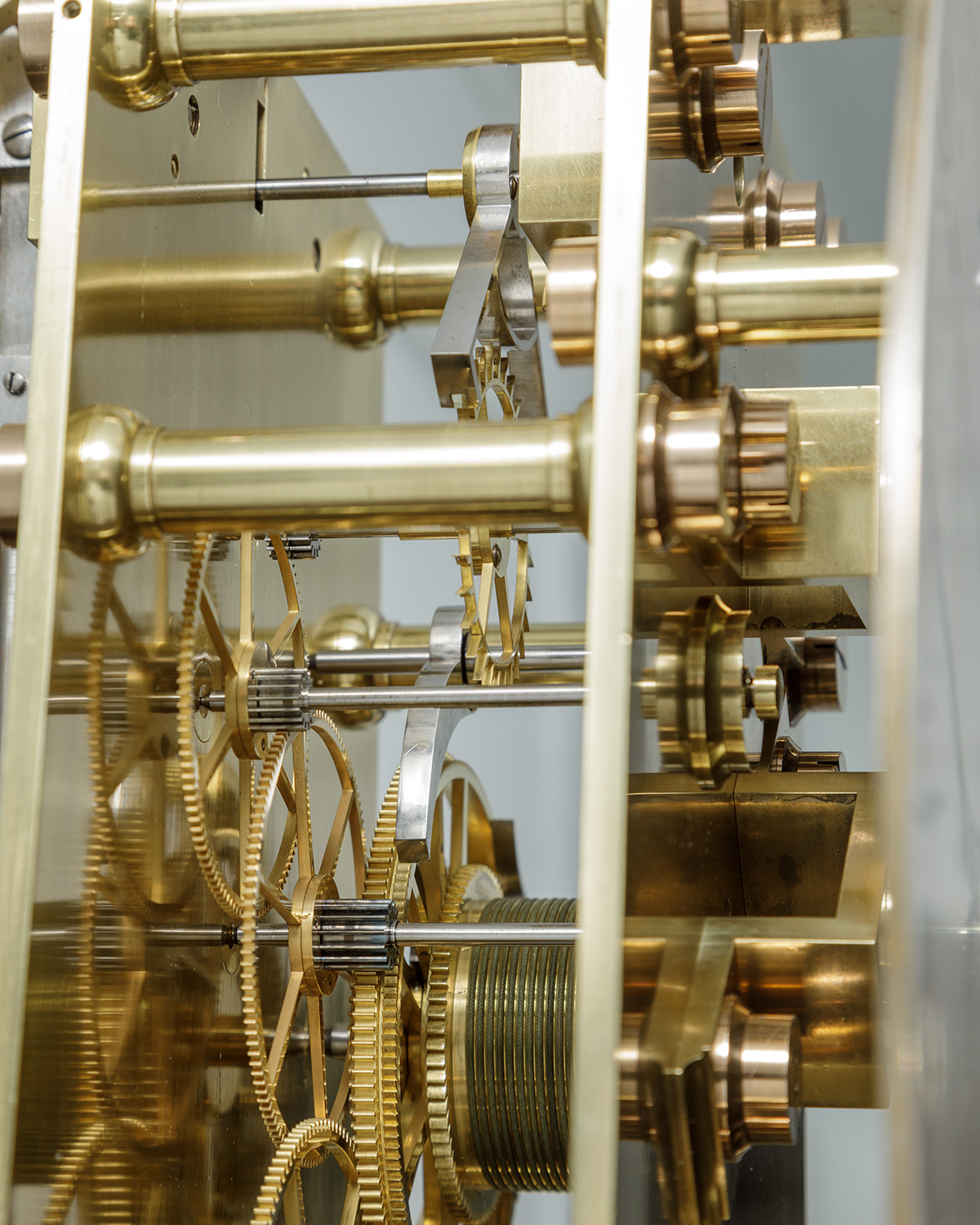
Circa 1845
£22,000
6 foot 4¼ inches high
A very fine carved solid mahogany 8-day longcase regulator with end-stops and dustplates. The movement probably by Thomas Leyland, or James Condliff CASE The solid mahogany case rests on a plain skirted base which is fronted by a panel with carved inverted corners, the trunk door is glazed and flanked by convex moulded pilasters with carved foliate capitals, the hood is supported by carved volutes and the dial bezel is very finely carved with acanthus foliage with original green baize lining. DIAL The 12-inch silvered brass regulator dial is signed Jno. Poole London in the centre, the hour ring with pierced blued steel trefoil-form hand, the seconds dial with observatory markings and blued steel counterbalanced hand. MOVEMENT The fine quality ‘shuttered' movement has thick brass plates conjoined by six robust double-screwed pillars; the high count wheel train has six spoke crossings all with screwed end-caps – the escape wheel pivots are both jewelled as are the deadbeat escapement pallets, the pendulum is suspended from a well-crafted suspension block which is screwed to the backboard and has fine beat adjustment, the pendulum itself has a steel rod and mercury glass jar compensation with blued steel index which swings against a silvered beat scale on the flame-veneered mahogany backboard About this clock This very fine regulator is possibly the only example signed John Poole known to exist. Such paucity of any other examples leads on to assume that it was probably retailed by Poole and that the maker of the movement was either James Condliff of Liverpool or Thomas Leyland of Prescot. Condliff, best known for his outstanding skeleton clocks, did produce some exceptional longcase regulators with end-capped pivots, shuttered plates jewelled pivots and pallets and the same pendulum suspension block fixed to the backplate. An almost identical movement to this example retailed by James Gray and stamped Condliff on the frontplate is in the Prescot Museum and is further illustrated in English Precision Pendulum Clocks by Derek Roberts on page 125 figures 18-11 A-F. However perhaps a more likely candidate is Thomas Leyland who was also known for specialising in making precision regulators not only for the Condliffs but also such illustrious London clocks makers as Charles Frodsham and Benjamin Lewis Vulliamy. On balance, given his known London connections with Vulliamy and Frodsham and that he also made for Condliff, it seems more likely that Thomas Leyland made this particular movement. John Poole Jnr 1818-1867 John Poole Jnr was the fourth of six children and the son of the eminent watchmaker John Poole (1791-1844) of 36 Charles Street, Clerkenwell, London. John Junior stayed with his father making and perfecting the art of chronometry, whilst his other horological brother James took a different but successful path making watches. John Jnr is best known for inventing the eponymous ‘Poole's Auxiliary' balance wheel which was a very simple but affective affix which improved middle temperature error very effectively; it was endorsed by the Admiralty and picked up by virtually every other chronometer maker in the U.K. The Pooles specialised in making marine chronometers of the very highest quality and regularly achieved first place at the at the Kew Observatory awards. John also received the Gold Medal for horology at the Paris Exhibition of 186, sadly the same year that he died. The fact that this is probably the only existing regulator signed John Poole makes it quite likely that it was either a one-off special order for a wealthy client, or more likely it was Poole's personal regulator for us either at home or in his offices in Clerkenwell.
